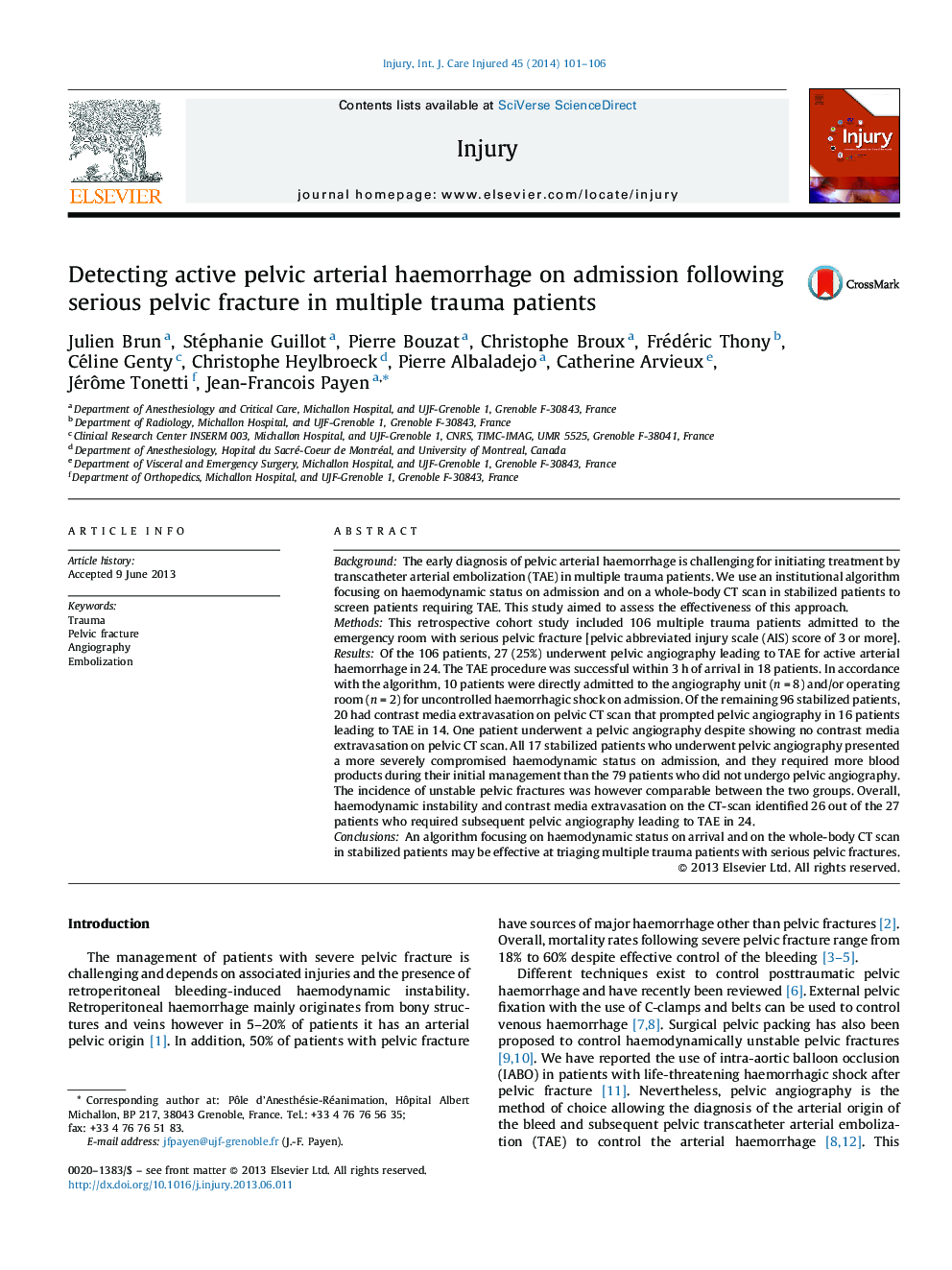| کد مقاله | کد نشریه | سال انتشار | مقاله انگلیسی | نسخه تمام متن |
|---|---|---|---|---|
| 3239804 | 1206020 | 2014 | 6 صفحه PDF | دانلود رایگان |
BackgroundThe early diagnosis of pelvic arterial haemorrhage is challenging for initiating treatment by transcatheter arterial embolization (TAE) in multiple trauma patients. We use an institutional algorithm focusing on haemodynamic status on admission and on a whole-body CT scan in stabilized patients to screen patients requiring TAE. This study aimed to assess the effectiveness of this approach.MethodsThis retrospective cohort study included 106 multiple trauma patients admitted to the emergency room with serious pelvic fracture [pelvic abbreviated injury scale (AIS) score of 3 or more].ResultsOf the 106 patients, 27 (25%) underwent pelvic angiography leading to TAE for active arterial haemorrhage in 24. The TAE procedure was successful within 3 h of arrival in 18 patients. In accordance with the algorithm, 10 patients were directly admitted to the angiography unit (n = 8) and/or operating room (n = 2) for uncontrolled haemorrhagic shock on admission. Of the remaining 96 stabilized patients, 20 had contrast media extravasation on pelvic CT scan that prompted pelvic angiography in 16 patients leading to TAE in 14. One patient underwent a pelvic angiography despite showing no contrast media extravasation on pelvic CT scan. All 17 stabilized patients who underwent pelvic angiography presented a more severely compromised haemodynamic status on admission, and they required more blood products during their initial management than the 79 patients who did not undergo pelvic angiography. The incidence of unstable pelvic fractures was however comparable between the two groups. Overall, haemodynamic instability and contrast media extravasation on the CT-scan identified 26 out of the 27 patients who required subsequent pelvic angiography leading to TAE in 24.ConclusionsAn algorithm focusing on haemodynamic status on arrival and on the whole-body CT scan in stabilized patients may be effective at triaging multiple trauma patients with serious pelvic fractures.
Journal: Injury - Volume 45, Issue 1, January 2014, Pages 101–106
